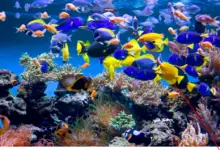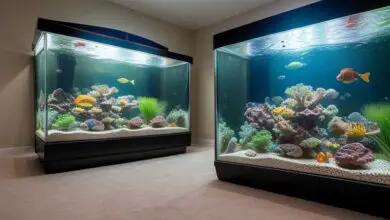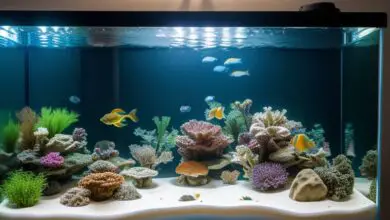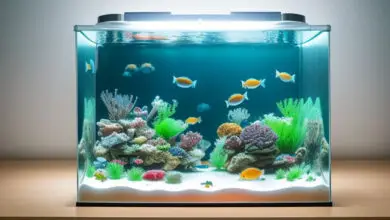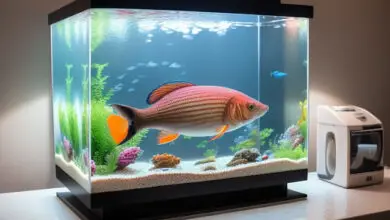Sustainable Breeding Practices for Aquarium Fish

Many aquarists eventually try their hand at spawning fish. Watching new fry hatch and grow remains an utterly life-affirming hobby experience. However, breeding practices also impact market supplies and by extension, environmental collection demand. So conscientious aquarists have an obligation to propagate fish sustainably.
This guide offers tips for ecologically minded breeders to produce new generations without fueling the destructive practices harming wild fish populations across threatened habitats.
Evaluating Breeding Motivations
First reflect deeply on “why” you want to breed fish in captivity. Several philosophies shape breeding decisions:
Self-Sustaining – Propagate personal pets without continually buying replacements. Share extra offspring only within immediate community.
Income Supplement – Fund the hobby through profitable species commanding high market prices due to scarcity or aesthetics.
Conservation Hatchery – Selectively breed endangered species to preserve captive genetic reservoirs should wild populations collapse irrevocably.
Supply Alternative – Intentionally divert demand away from newly imported wild caught fish by producing abundant captive-bred options for consumers instead.
These frameworks prioritize different outcomes so should guide methodologies around breeder ethics. What philosophy attracts you?
Researching Sourcing Ethics
Wild populations remain indispensable to fresh infusion of captive gene pools despite excelling at propagation. So research collection locales and export practices of species that interest you before acquiring potential breeders.
Indicators of Unethical Sourcing:
- Newly Discovered/Imported – Recently “discovered” species likely mass collected from virgin habitat before protections enacted.
- Striking Color Morphs – Popularity of newly imported color strains often precipitates habitat decimation for trade demand.
- Special Capture Methods – Cyanide, dynamite or sediment chumming used by exporters to access deeper reef inhabitants.
- Origin Obfuscation – Exporters hiding true collection points to bypass protections on overfished locales. Lists only exporting country.
- Wholesale Discounts – Promotions urging bulk purchases for discount resale often exploit foreign labor while hiding unsustainable collection volumes.
- Replacement-Only Fisheries – Continual dependence on new wild imports instead of captive breeding indicates reckless harvesting ignoring extinction risk.
Support ethical alternatives like tank raised, responsibly collected or sustainably farmed species. Ask retailers to expand transparency around stock origin and collection practices. Reward good actors while avoiding poor ones.
Acquiring Prospective Breeders
Once identifying suitable species through ethical sourcing checks, locate optimal breeder fish. Prioritize specimens exhibiting natural behaviors key for propagation:
1) Appropriately Sized – Select young adults that recently reached sexual maturity based on species research.
2) Actively Foraging – Strong sustained appetite and weight gain signals health supporting reproduction.
3) Displaying Species Courting Cues – Exhibiting natural breeding coloration, dances, bubble nest building, territory displays or pairing indicates readiness.
4) Sociable Toward Own Species – School in groups or pair bond with prospective mates. Aggression discourages spawning.
Quality parent candidates eat, grow and interact normally ensuring they internalize suitable conditions for mating and rearing offspring. Never force unwilling, stressed or emaciated fish to spawn using harsh chemicals or threats.
Furnishing Suitable Spawning Environments
Many species only release eggs given specific environmental triggers mimicking their ecological breeding niches in nature. So research habitat parameters prompting natural reproductive behaviors in chosen breeders:
- Water hardness/pH levels
- Rainy/dry seasonal water level fluctuations
- Warmer/cooler temperature shifts
- Light spectrum changes
- Territory plants, caves or accessories
Recreate elements fish recognize as go-signals to start courtship and spawning including seasonal simulation. Offer suitable egg deposit sites like marbles, yarn mops, overturned saucers etc. Complex breeding triggers prevent random unwarranted reproduction.
Supportive Feeding Regimes
Well fed individuals produce significantly higher egg and sperm cell counts with better viability rates for healthy hatching babies. Energy and nutrients fuel reproduction. Target condition factors around 1.5-2x normal averages. Supplement foods high in:
- Spirulina algaes
- Krill, brine shrimp, daphnia, blackworms – High quality proteins and lipids
- Sea vegetables – Vital fatty acids, minerals and vitamins
- Wild-type color enhancing foods – Carotenoids for intense natural hues
- Live/frozen options – Bioavailable nutrients surpassing flakes
Avoid hormones or chemically augmented feeds trying to force spawn small stunted or unready breeders. These typically weakened fish often birth offspring too feeble to thrive or heavily deformed.
Natural Spawning Cues
Given excellent housing conditions mimicking natural triggers, many fish eagerly begin instinctual courtship dances, bubble nest building and spawning embraces. Still occasionally specimens need a final nudge to release eggs or fertilize.
Before attempting manual spawning assistance methods, try non-invasive environmental tweaks first:
- Slowly lower water levels to concentrate pheromones released into smaller volumes sloshing eggs toward partners.
- Adjust photoperiods to shorter days or interrupt night intervals with light beams imitating passing full moons known to eliciti mating urges.
- Carefully siphon small volumes of existing tank water from another species actively breeding to infusion sexually charged chemical signals.
If fish still hesitate finalize spawning after above tweaks, have intermediate level hormonal options on standby discussed later under ethical assumptions. But avoid pursuing too quickly.
Handling New Eggs and Fry
Once fish successfully spawn, focus shifts to ensuring next generations thrive free of deformities, illness or stunted growth trends:
Egg Care Essentials
Remove adults immediately after laying eggs if species predate their own young. Then address fungus prevention:
- Methylene blue dips – Antifungal and antiseptic baths between 30 seconds to 3 minutes then return eggs rapidly back into original system
- Fungus eliminator medicine – Use prophylactic doses during egg stage ensuring fungus cannot gain foothold during vulnerable cell divisions
- Lower temperatures – Slow pathogen metabolism while still enabling egg maturation around 60-70°F for tropicals
Critical First Feeding Regimes
Stock cultures of tiny live “micro foods” needed for initial fry feeding once absorbing egg sac reserves. Have ready daily:
- Freshly hatched baby brine shrimp
- Rotifers
- Paramecium
- Vinegar eels
- Infusoria suspensions
New fry need near constant access to these concentrated protein and lipid sources fueling accelerated growth. Introduce powdered starter foods only after a month once digestive tracts mature withstand dry particles.
Rigorous Water Quality Monitoring
Test ammonia and nitrites twice daily on volumes supporting new babies. Their developing gills and kidneys cannot process toxins like juvenile/adults. Address through:
- Ultra frequent 100% water changes if suboptimal readings detected.
- Heavy supplemental batteries of quick-establishing filter bacteria dosing bottled formulas like Fritzzyme, Stress Zyme etc.
If unable to export heavy nitrogenous waste daily through water replacements, use binder resins like zeolite mixes trapping ammonia and nitrites within pores limiting bioavailability until removable. But monitor resin efficiency testing surrounding water.
Recognizing Genetic Defects
While environmental factors contribute greatly in fish health, poorly selected breeder traits pass real problems onto descendants. Cull any individuals expressing:
- Spinal curvatures
- Missing finnage
- Bloating diseases
- Hemorrhaging
- Floating/sinking issues
- Small size stragglers off curve
Remove these fish humanely ensuring only suitable offspring contribute future gene pools. Standards strictly shape populations over generations. Allow all healthy individuals reaching juvenile stage to fully mature before considering retention or placement.
Judiciously Using Hormonal Assists
Synthetic hormone applications encourage unwilling or non-maturing fish to spawn earlier and more often than natural capacity. While tempting for yields, complex ethical dilemmas arise regarding morality.
Arguments Supporting Use
- Generates more captive bred fish reducing market demand on newly imported wild caught.
- Allows preservation of rare/endangered fish genes threatened by habitat losses before vanishing completely.
- Provide backup stock to public aquariums as institutional ark centers should species eventually face extinction in wild.
Arguments Against Use
- Magnifies genetic “popular sire effects” allowing singular supermates to dominate captive gene pools. Reduces diversity.
- Removes natural selection pressures by enabling poorly selected/deformed fish to successfully pass forward bad genes that would fail naturally.
- Creates cybergenic “monster fish” altered far outside natural norms regarding size, aggression or ecology.
Breeding Fish Responsibly
Many fish lovers try breeding fish. This can help reduce taking fish from the wild. But we must be careful so we don’t cause new problems.
Reasons to Breed Fish
- To enjoy baby fish growing up without always buying new fish.
- To make money selling popular kinds of fish.
- To protect rare fish that may disappear from the wild.
- To provide fish that stores can sell so less need to come from the wild.
Things to Consider
- Check that parent fish were collected responsibly, not in ways that damage reefs.
- Pick healthy adults that eat, grow, and act normal to have the best babies.
- Setup the tank to trigger spawning like they would in the wild.
- Feed excellent foods so fish make strong eggs and sperm.
- Try natural tricks first if fish don’t spawn on their own.
- Remove sick or odd looking baby fish so they don’t pass on problems.
- Be very careful using hormones to force spawning. It can cause issues.
How You Can Help
- Buy captive bred fish when possible.
- Avoid fish from damaged reefs.
- Support stores that breed fish and collect responsibly.
- Choose common fish instead of rare ones.

